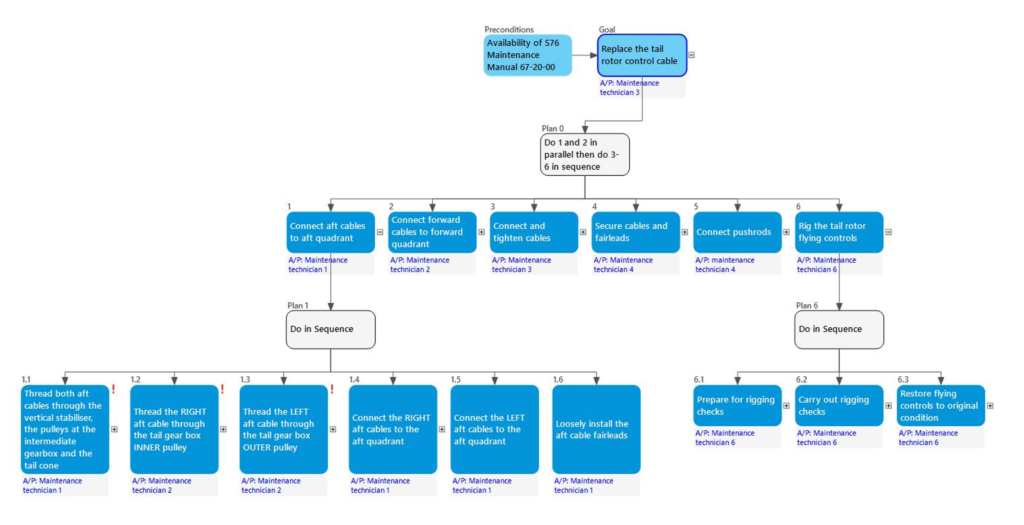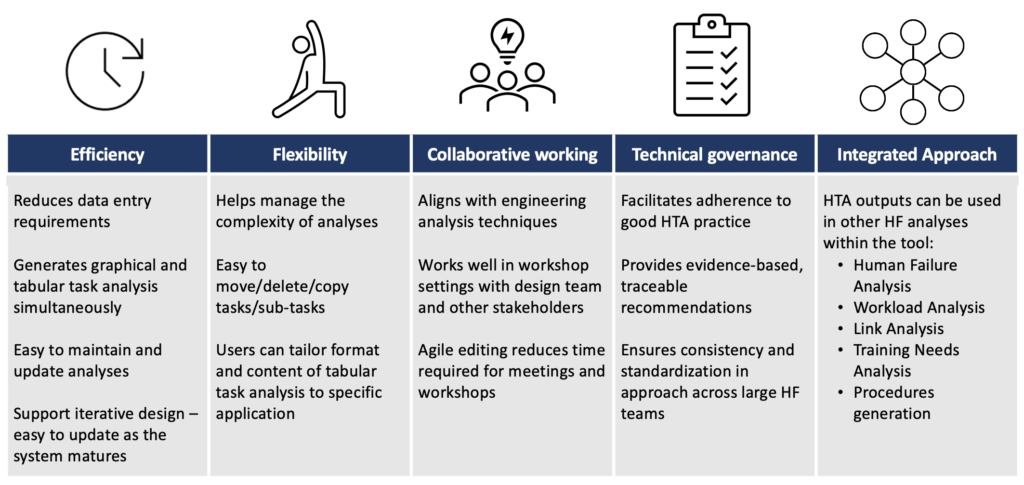Introduction
Mary Goode recently joined HRA to develop and manage our accounts in the Defence sector. Mary has worked in Defence for over 35 years and, in a series of blogs over the coming months she will be exploring how she thinks HRA’s innovative software tool, SHERPA, could be used to support Human Factors Integration (HFI) in Defence. In this first in a series of Blogs, she will explore how SHERPA can support Task Analysis.
Background
In a previous role with a major Defence supplier, I introduced HRA’s SHERPA software into the business to support their approach to managing human performance during the manufacture of hazardous products. This was all part of their approach to ensuring process safety and compliance with the Control of Major Accident Hazards (COMAH) Regulations 2015; the HF team used the tool extensively to undertake Safety Critical Task Analyses (SCTA) and Human Failure Analyses (HFA).
On joining HRA, I was surprised to learn that the SHERPA software was not more widely used across the Defence sector. I think the tool has untapped potential in helping to ensure that the human component of defence capability is appropriately considered throughout all phases of the system lifecycle. As we all know, failure to consider the human component of military capability from the outset can have many adverse safety, operational, and financial consequences e.g. increased risk of accidents and incidents, reduced mission effectiveness, and potential increases in redesign costs.

In this first blog, I will provide some background on the SHERPA software itself, and then focus on how it can support one of the most fundamental and resource intensive HF Activities in any Human Factors Integration Plan (HFIP) – Task Analysis – including what I see as the key benefits. This should also be of interest to those outside of the Defence sector.
What is the SHERPA software?
For those who are not familiar with the SHERPA software, it is an integrated set of software tools designed to support a range of human factors analyses (Hierarchical Task Analysis (HTA), link analysis, human failure analysis, workload analysis). It has proved a powerful platform for addressing human performance in highly regulated safety critical industries such as pharmaceuticals, oil and gas, transport and healthcare. Click here to learn more.
SHERPA was originally designed to align with engineering-based risk analysis tools, and hence has been widely taken up by organisations that need to provide evidence to regulatory authorities that the risks arising from human interactions with systems have been analysed and minimised by appropriate HF design interventions. HRA has provided licences for the SHERPA software to users from safety critical organisations across the UK and internationally.
One of our pharma clients has recently reported a 58% reduction in operator safety risk and a 43% reduction in risk to quality and assets in manufacturing processes at one of its sites where SHERPA was introduced. |
Task Analysis
As described in MoD’s Human Factors Integration Management System (HuFIMS), the purpose of Task Analysis in a Defence context is to provide assurance that all user tasks associated with the system capability have been captured and understood. It is a critical HF activity and a deliverable that is used throughout the design lifecycle to verify that the system safely and effectively enables the users to complete the tasks required to achieve the capability.
At the heart of the SHERPA tool is the Hierarchical Task Analysis module which is used to capture a clear understanding of the operator and maintainer tasks required to ensure overall effectiveness of the system in an operational context .

Using a ‘drag and drop’ facility, procedures, checklists, and task lists can be easily imported into the tool to help produce a graphical representation of the overall task goal, subtasks and steps within these subtasks to the level of detail required for the application. As the graphical representation develops, a tabular task analysis (known as a data grid) is also automatically generated where the analyst can capture additional information required on tasks for a specific application. It is very easy to move ‘boxes’ (subtasks and steps) around and resultant changes are automatically updated in the data grid.
The SHERPA interface has been designed using HF principles to maximise ease of use and to support collaborative working with multi-disciplinary team and end users to review and update the HTA as system design progresses. The intuitive graphical approach means it is easy to see how the overall task is broken down, and as the analysis can be easily edited and adjusted in real time, it facilitates engagement in workshop settings as participants see instantly their inputs being incorporated into the analysis.
The Hierarchical Task Analysis provides an output to other linked modules in the software which deliver a range number of HFI products. I will discuss these in later blogs.
So, what are the key benefits of using SHERPA for Task Analysis in Defence?

There are a number of potential technical and project management benefits of using the SHERPA tool for Task Analysis in Defence.
Efficiency:
- Speeds up the Hierarchical Task Analysis development process.
“The SHERPA software has made my task analysis seven times faster.” – Medical device Designer, Global Medical Device Manufacturer |
- Enables the analyst to quickly import procedures, task lists etc to generate a ‘first pass’ HTA significantly reducing data entry requirements.
- Generates and updates the graphical and tabular task analysis simultaneously.
- Supports iterative design – it is easy to maintain and update the HTAs as the system design. matures, which from a Defence perspective could be very beneficial bearing in mind potentially long project lifecycles.
- Supports integration of task analysis in different project stages.
Flexibility:
- HTAs can be detailed and complex. With the SHERPA tool, this complexity can be easily hidden, and the hierarchy can be expanded to reveal more detail, as and when required.
- Analyst can move sub-tasks/steps around, and delete, copy boxes very easily.
- Format and content of the data grid (tabular task analysis) can be tailored to ensure it facilitates the capture of Task Analysis contents for a specific requirement.
Supports Collaborative working:
- Alignment with the engineering discipline means that the tool lends itself to supporting dialogue across disciplines throughout the design lifecycle.
- Visual representation of tasks works well in workshop settings and prompts discussion: the intuitive interface and ease with which participant inputs can be incorporated immediately into the analysis helps to make these engaging and productive sessions.
- Agile editing of HTA reduces the time required for design meetings and workshops.
Ensures Technical Governance
- Facilitates adherence to good HTA practice (or heuristics) necessary for a detailed and thorough analysis.
- Ensures consistency and standardisation in approach particularly useful on large project teams, which may include Human Factors Engineers from several suppliers, or with different levels of HF competence.
Provides an Integrated Approach
- HTA outputs form the foundation for a number of other HF analysis techniques also incorporated into the toolset – human failure analysis, workload analysis, link analysis, training needs analysis – providing a coherent, truly integrated approach to HF in Defence.
- Enables procedures generation.

From my own perspective, I experienced these benefits when I was part of a small HF team responsible for producing task analyses for a challenging number of hazardous processes. The speed with which the tool enabled us to produce our initial HTAs meant that there was more time available for the overstretched HF resources to spend on actual analysis. The way SHERPA visually represented the process, and the ease with which we could update analyses in real-time, made workshops reviewing analyses with operators and maintainers very engaging and efficient to run. Feedback from the workforce who attended these sessions was always very positive. The tabular task analyses, produced automatically alongside the graphical output, formed the foundation for the next step in our HF programme – Human Failure Analysis – which I will discuss further in my next blog.
Next Steps
If you would like to find out more about how SHERPA could support your HFI activities in the Defence sector, please visit Defence | Human Reliability or contact me at HRA mary.goode@humanreliability.com
If you would like to see how SHERPA works, please visit SHERPA (Human Factors Risk Management Software) – YouTube













